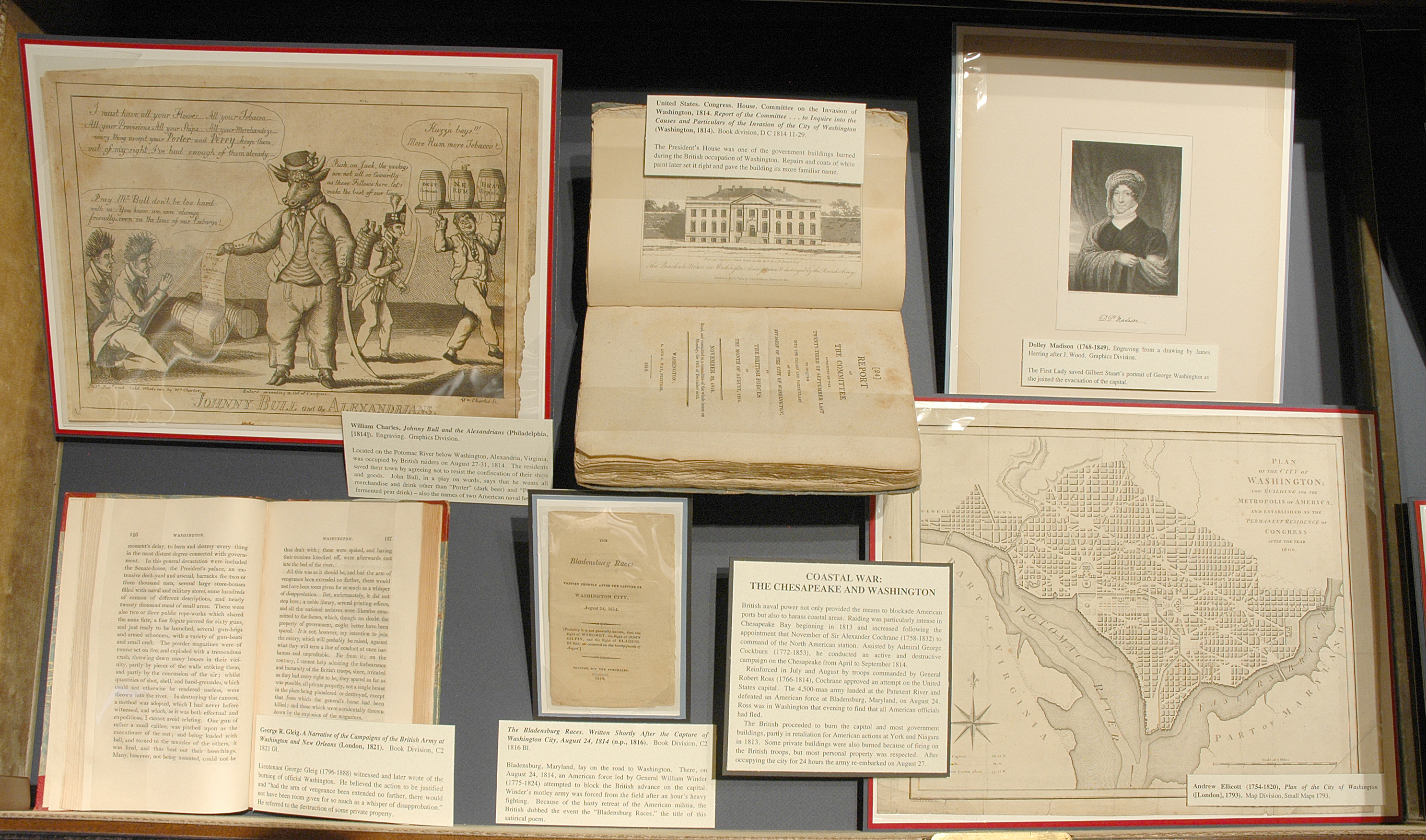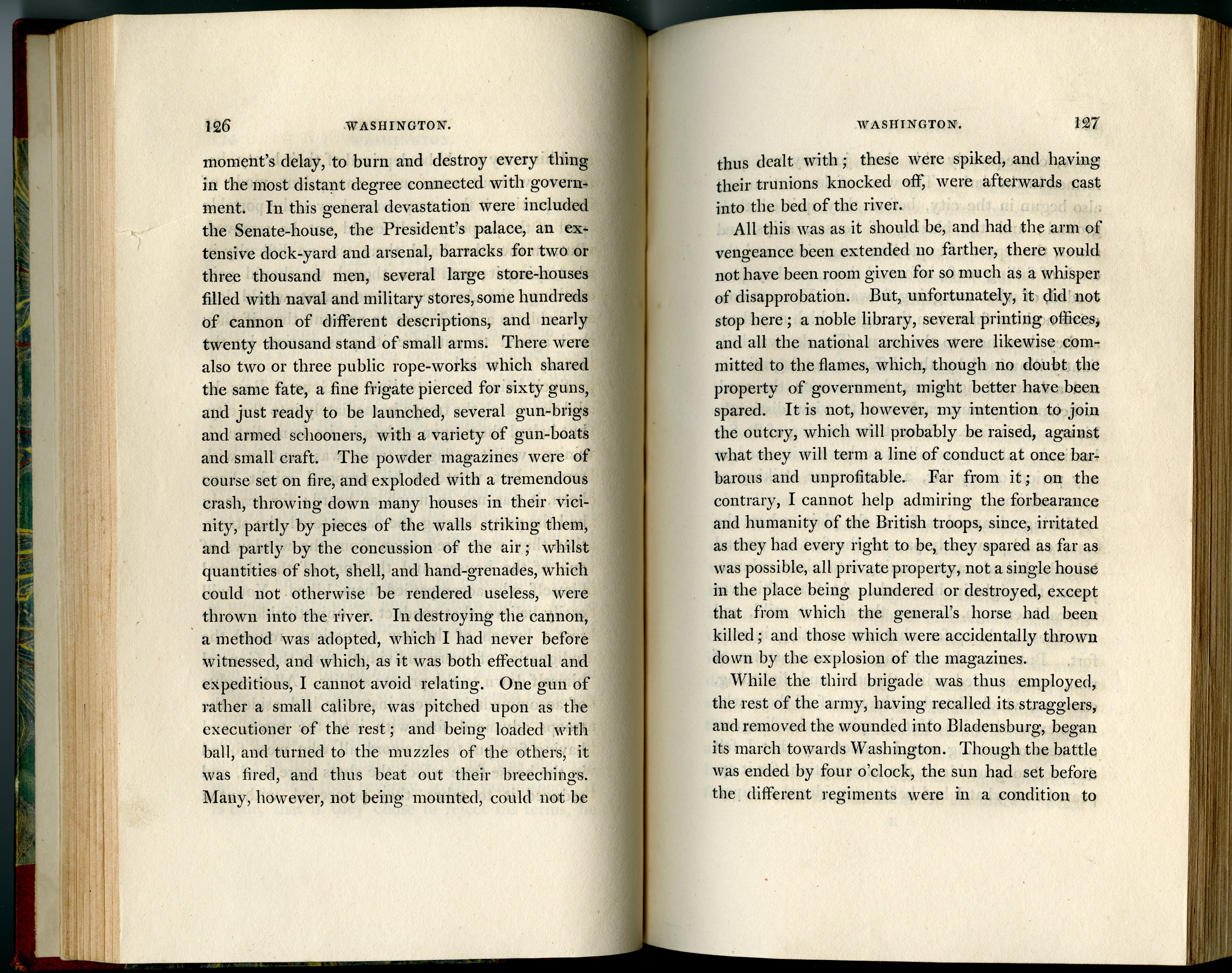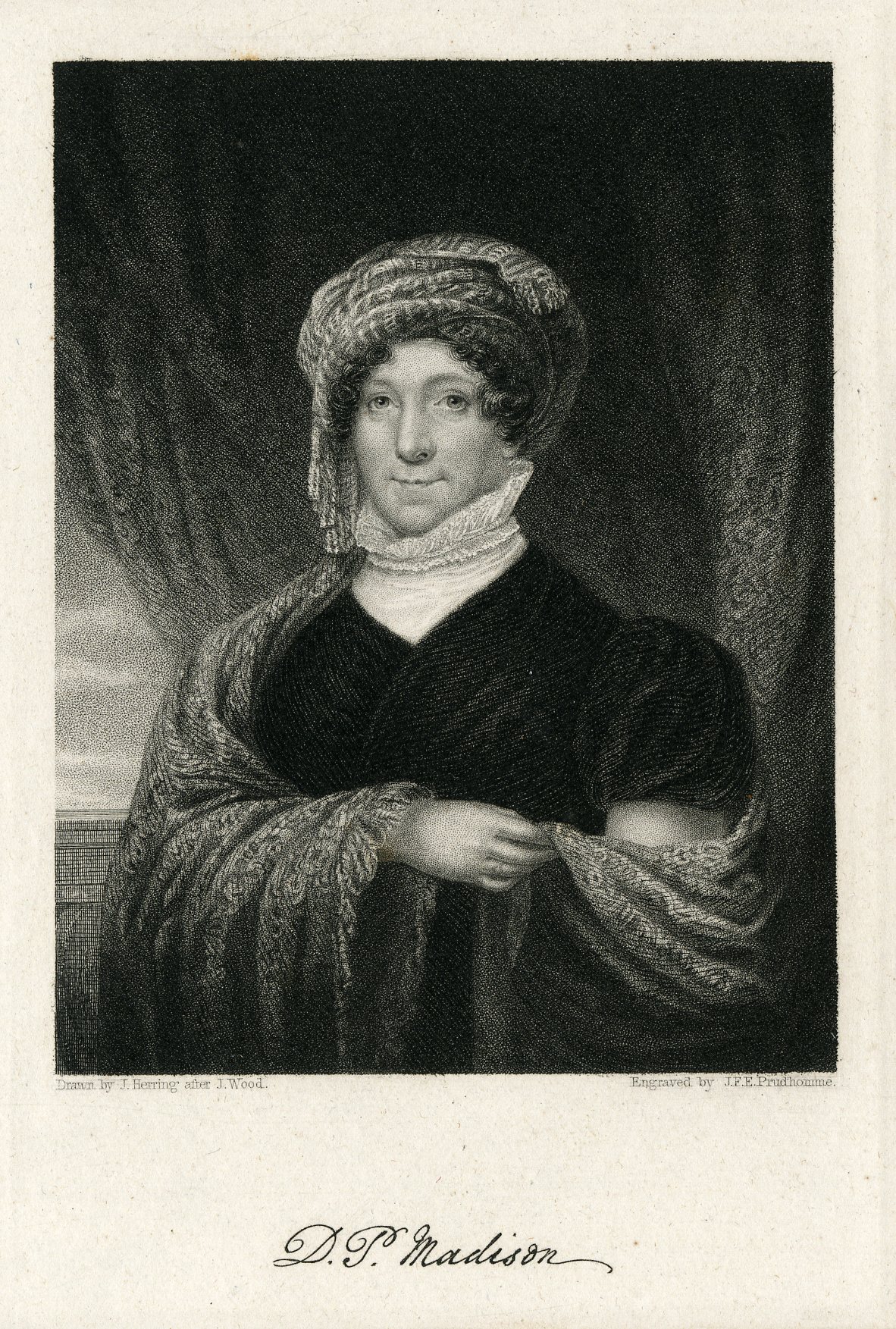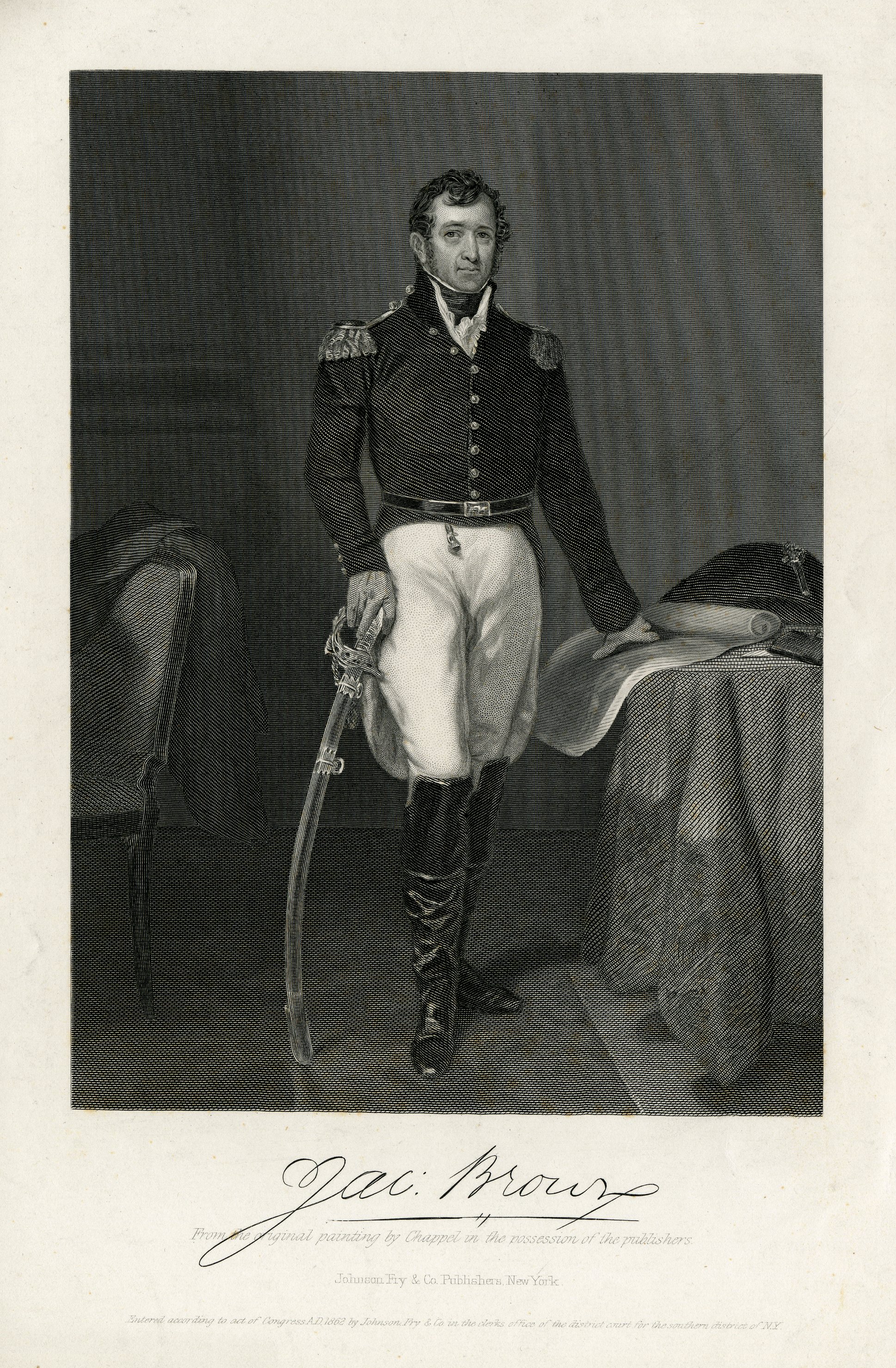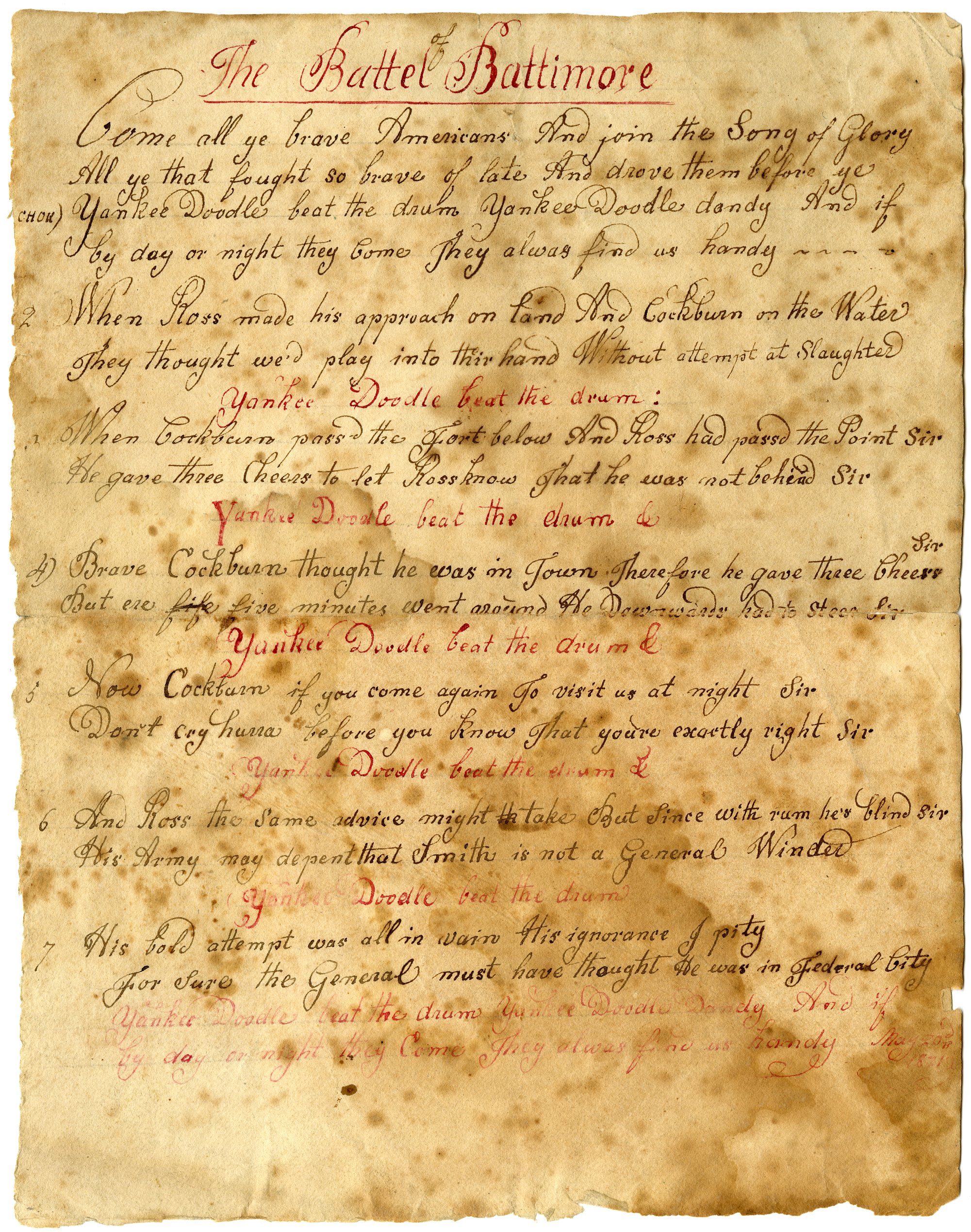The War of 1812: A Bicentennial Exhibition, Case 13
Case 13: Coastal War: The Chesapeake and Washington
British naval power not only provided the means to blockade American ports but also to harass coastal areas. Raiding was particularly intense in Chesapeake Bay beginning in 1813 and increased following the appointment that November of Sir Alexander Cochrane (1758-1832) to command of the North American station. Assisted by Admiral George Cockburn (1772-1853), he conducted an active and destructive campaign on the Chesapeake from April to September 1814.
Reinforced in July and August by troops commanded by General Robert Ross (1766-1814), Cochrane approved an attempt on the United States capital. The 4,500-man army landed at the Patuxent River and defeated an American force at Bladensburg, Maryland, on August 24. Ross was in Washington that evening to find that all American officials had fled.
The British proceeded to burn the capitol and most government buildings, partly in retaliation for American actions at York and Niagara in 1813. Some private buildings were also burned because of firing on the British troops, but most personal property was respected. After occupying the city for 24 hours the army re-embarked on August 27.
The Bladensburg Races. Written Shortly After the Capture of Washington City, August 24, 1814 (n.p., 1816). Book Division, C2 1816 Bl.
Bladensburg, Maryland, lay on the road to Washington. There, on August 24, 1814, an American force led by General William Winder (1775-1824) attempted to block the British advance on the capital. Winder’s motley army was forced from the field after an hour’s heavy fighting. Because of the hasty retreat of the American militia, the British dubbed the event the “Bladensburg Races,” the title of this satirical poem.
United States. Congress. House. Committee on the Invasion of Washington, 1814. Report of the Committee . . . to Inquire into the Causes and Particulars of the Invasion of the City of Washington (Washington, 1814). Book division, D C 1814 11-29.
The President’s House was one of the government buildings burned during the British occupation of Washington. Repairs and coats of white paint later set it right and gave the building its more familiar name.
George R. Gleig. A Narrative of the Campaigns of the British Army at Washington and New Orleans (London, 1821). Book Division, C2 1821 Gl.
Lieutenant George Gleig (1796-1888) witnessed and later wrote of the burning of official Washington. He believed the action to be justified and “had the arm of vengeance been extended no farther, there would not have been room given for so much as a whisper of disapprobation.” He referred to the destruction of some private property.
Dolley Madison (1768-1849). Engraving from a drawing by James Herring after J. Wood. Graphics Division.
The First Lady saved Gilbert Stuart’s portrait of George Washington as she joined the evacuation of the capital.
Andrew Ellicott (1754-1820), Plan of the City of Washington ([London], 1793). Map Division, Small Maps 1793.
William Charles, Johnny Bull and the Alexandrians (Philadelphia, [1814]). Engraving. Graphics Division.
Located on the Potomac River below Washington, Alexandria, Virginia, was occupied by British raiders on August 27-31, 1814. The residents saved their town by agreeing not to resist the confiscation of their ships and goods. John Bull, in a play on words, says that he wants all merchandise and drink other than “Porter” (dark beer) and “Perry” (a fermented pear drink) – also the names of two American naval heroes.

